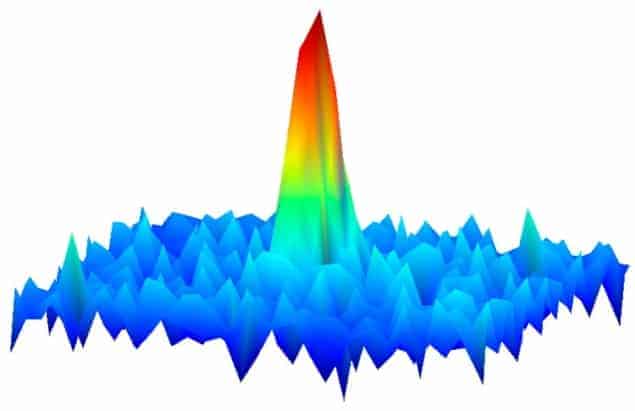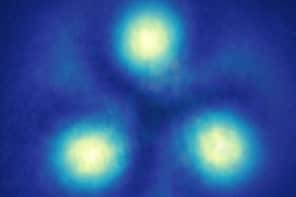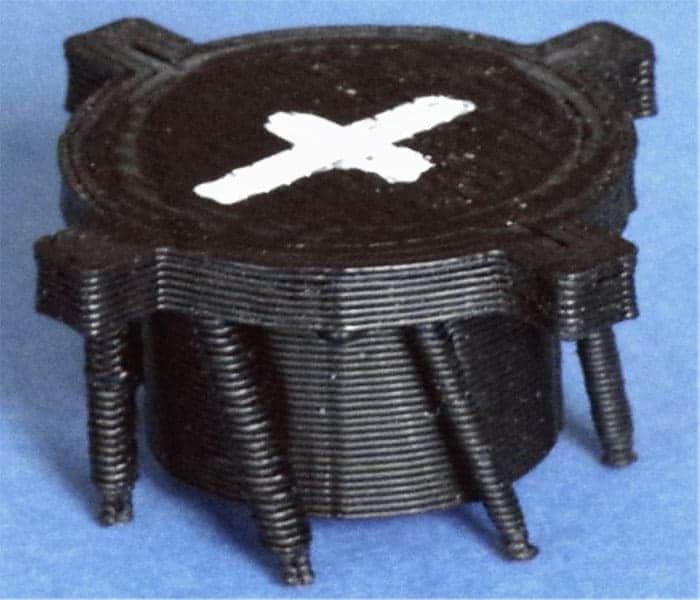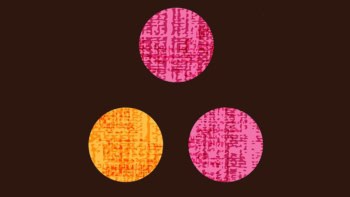
Physicists in the US have observed chemical reactions taking place at such low temperatures that they are dominated by quantum effects, rather than thermal collisions. The researchers showed that diatomic molecules containing potassium and rubidium are much less likely to react with each other, when cooled to just 500 nK, if they are all prepared in the same quantum state. As well as providing important information about the quantum nature of chemical reactions, the technique could also be used to extend the lifetimes of ultracold gases by reducing the rates at which their constituent atoms and molecules react.
Although quantum mechanics lies at the heart of every chemical reaction, it is not easy to work out how the initial quantum states of the reactants affect the rate of reaction. This is because most of what we know about chemistry is based on observations at tens or hundreds of kelvin, where thermal fluctuations cause atoms and molecules to enter reactions in a wide range of initial quantum states.
One way of getting round this problem is to cool the atoms or molecules to near absolute zero to remove the effects of thermal fluctuations. In this case, the quantum states of the reactants can be fixed at the start of the experiment – and will endure until the reaction occurs. With common molecules such as ammonia, however, physicists have only managed to cool reactants to hundreds of millikelvin – which is not cold enough to fix the initial sates.
Cold enough
But by cooling potassium-rubidium (KrB) molecules to just a few hundred nanokelvin, Jun Ye, Deborah Jin and colleagues at the National Institute of Standards and Technology (NIST) in Colorado and Maryland have been able to observe the effects of specific initial states on how reactions proceed.
The team created the KrB molecules by exposing an ultracold mixture of potassium and rubidium atoms to a magnetic field gradient, which causes the atoms to bind together. The bond between the atoms is further strengthened by exposing the atoms to laser light. By adjusting the way the molecules are prepared, Ye and colleagues could either put all the molecules in the same low-energy quantum state or create a mixture of molecules in two different low-energy states.
When a collision occurs, the molecules can react to form Rb2 and K2 – and the energy released causes both to be ejected from the trap. The rate at which the KRb atoms react can therefore be determining by measuring the number of trapped molecules as a function of time. With the gas held at a chilly 500 nK, the KRb molecules were found to collide much more slowly than molecules in a typical chemical reaction.
Tunnelling molecules
KRb molecules are fermions – they have half-integer spin – which means that two molecules will avoid each other if they are both in the same quantum state. Indeed, two identical molecules only react if they first quantum-mechanically tunnel through this effective energy barrier. However, when the molecules are in two different states, this barrier does not exist and the reaction was seen to occur up to 100 times faster.
The researchers then took a closer look at reaction rates for molecules in the same quantum state. By repeating their measurements at several temperatures between 200 and 900 nK, they found that the rate increased as a function of temperature. This confirms that the limiting factor for the reaction is quantum mechanical tunnelling – once the molecules get beyond this barrier, the reaction proceeds rapidly.
New chemical reactions
“For the first time, we can explore how quantum-mechanical rules, as they are applied to the whole composite molecules, propel a chemical reaction,” explains Ye. He adds that the team’s findings could lead to the design of new chemical reactions and provide scientists with new ways of controlling chemical reactions.
A more immediate consequence of the experiment, according to Jeremy Hutson of Durham University in the UK, is that it could help physicists to reduce the rate of unwanted reactions in trapped ultracold gases. Such reactions place severe limits on the types of atoms and molecules that can be trapped – and overcoming these limits could allow simulate a wider range of quantum phenomena that is possible today.
Indeed, Ye told physicsworld.com that the team is now developing new approaches to suppress reactions. “We will use these precisely engineered molecular systems for quantum simulations of condensed matter systems, for example, and explore new phases of matter and quantum phase transitions,” says Ye.
The work is described in Science 327 853.



